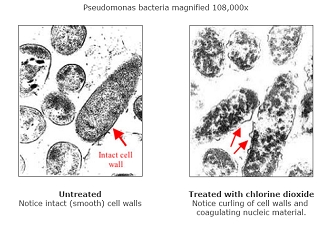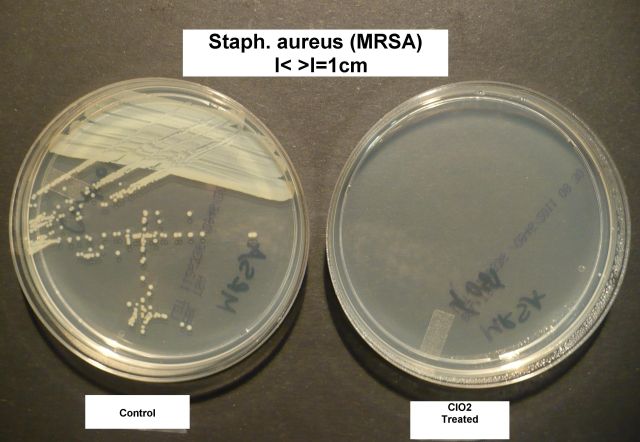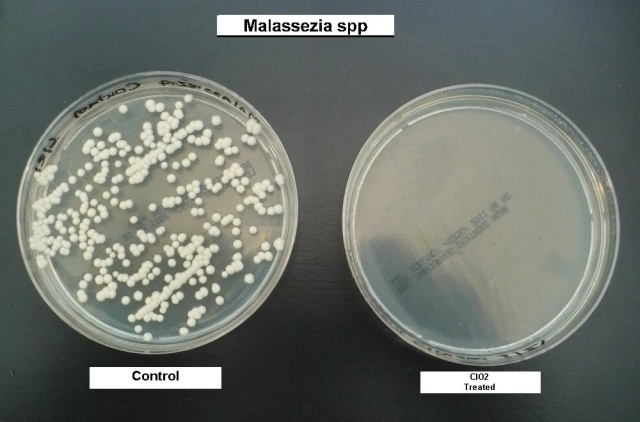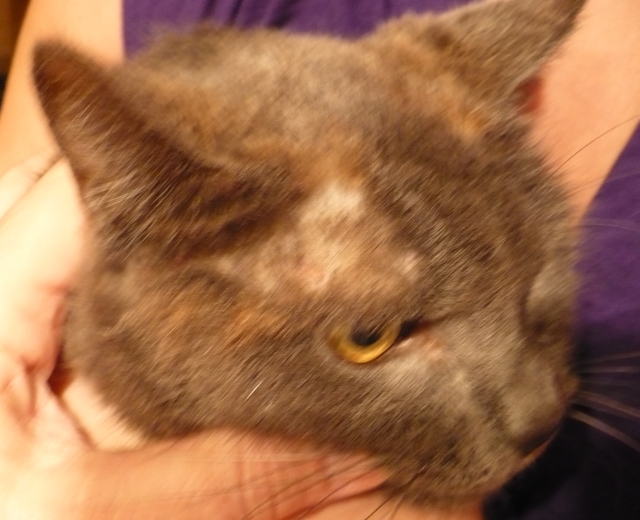
Chlorine Dioxide Complex - an Overview & FQA
Chlorine dioxide (ClO2) is a gas that dissolves readily in water. The molecule is a free radical because of an unpaired electron which makes the compound particularly active as an oxidizing agent, but unlike chlorine (Cl2), chlorine dioxide is eco-friendly. It does not hydrolyze in water to form hydrochloric acid but remains in solution as a dissolved gas . Similarly chlorine dioxide does not form chlorinated hydrocarbons which can be carcinogenic. The aqueous solution is non irritating to skin. Chlorine dioxide is a strong oxidizing agent and a fast acting microbicidal agent effective at low concentrations . It is widely used as a water purifier , disinfectant , and sanitizer. It is also used as a topical antiseptic agent with a wide spectrum of micobicidal activity against bacteria, yeast, fungi, protozoa, and viruses .
A liquid form of active chlorine
dioxide complex containing 120ppm of stable chlorine dioxide
molecules in an aqueous solution is a proprietary formulation of Frontier
Pharmaceutical Inc. Melville, NY.
This formulation has been incorporated into a topical antiseptic
solution for the management of bacterial, yeast and fungal
infections in animals. (Ciderm
® SP Topical Antiseptic Solution).
How Does Chlorine Dioxide Work ?
| As an oxidizing agent chlorine dioxide disrupts the cell wall of microorganisms. The electron microscope photos show the disintegration of Pseudomonas spp organisms exposed to chlorine dioxide complex for less than a minute. The cytolytic effects are dramatic. Mammalian cells are less susceptble to this effect at the appropriate concentration of the chloride dioxide complex used to kill microbes. |
|
A demonstarion of the anti-microbial efficay of Ciderm SP Topical Soln. (with Chlorine Dioxide Complex) |
 Fig
1. shows a MRSA (Methicillin Resistant Staph.aureus.) cultured onto one untreated
agar plate used as a control and the other sprayed once
with CIDERM SP
Topical Antiseptic Soln After
16 hours no growth was observed on the treated plate. Fig
1. shows a MRSA (Methicillin Resistant Staph.aureus.) cultured onto one untreated
agar plate used as a control and the other sprayed once
with CIDERM SP
Topical Antiseptic Soln After
16 hours no growth was observed on the treated plate. |
 Fig 2. shows similar results after 10 days of culture
of Malassezia canis isolated from an ear
on a dog with otitis externa. Note the abundant growth of
the organism on the untreated control plate with no
growth on the treated plate. Fig 2. shows similar results after 10 days of culture
of Malassezia canis isolated from an ear
on a dog with otitis externa. Note the abundant growth of
the organism on the untreated control plate with no
growth on the treated plate. |
What conditions can be treated using Ciderm SP Topical Antiseptic Solution ?
Any topical skin wound, incision, infection, abrasion, ulcer, erosion, bite wound, dermatitis, ear infection, pododermatitis can be treated with Ciderm(R) SP Topical Antiseptic Solution. The spray can be used as an adjunct to treating any superfial infection or inflammation. Management of the underlying disease such a flea bite dermatitis, diabetes, tumor, etc must also accompany treatment of the topical infection with Ciderm Topical Antiseptic. If used in conjunction with other topical medications such as a steroids or antibiotics do not use Ciderm Topical Antiseptic Solution at the same time. Wait at least 10 mins after applying the Ciderm SP before applying other topical agents to avoid oxidation of the other medication.
What Clincal response should I expect ?
This will depend on the lesion being treated., it's size, cause and extent. Normal wound healing from a cut or abrasion takes 7 to 10 days. The photos below show a clearing of a miliary dermatitis on the right temporal area of a 16 year old DSH cat after 6 days of treatment with Ciderm SP Topical Antiseptic Solution alone. Chlorine Dioxide complex generally shortens the healing time.
|
 |
Is Chlorine dioxide better than other Antiseptics ?.
Yes. Many of the commonly used antiseptics in Veterinary Practice do not completely kill all bacteria fungi or viruses. For example , Benzalkonium chloride does not kill some Pseudomonas species and Chlorhexidine has poor activity against most viruses, mycobacteria, Pseudomonas and other gram negative bacteria. Alchohol takes a long period to be effective. Some antiseptics contain mercury (Thimersol) which can be highly toxic in low doses. Chlorine Dioxide does not form hydrochlorus acid, bleach or chlorine.